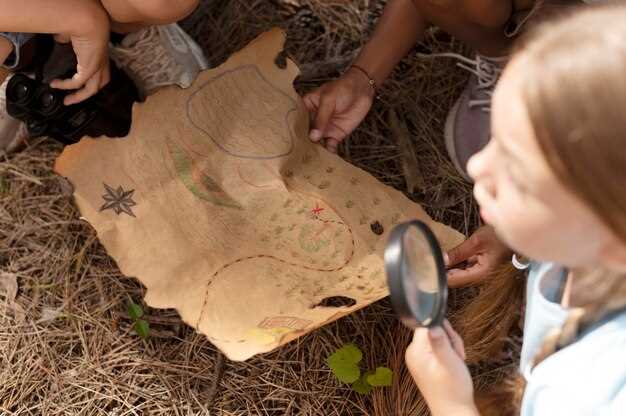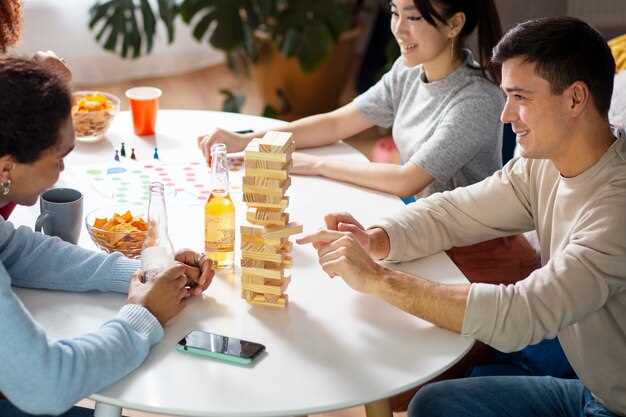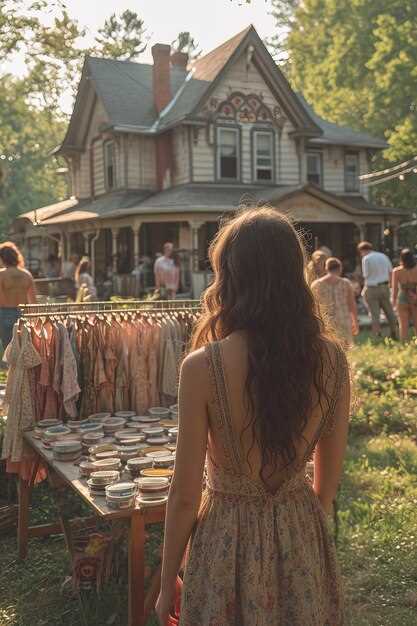Choose an era that captures your imagination, whether it’s the tumultuous times of the American Civil War, the grandeur of the Roman Empire, or the chivalry of the medieval ages. Historical reenactment allows you to step into a different period, immersing yourself in the culture, lifestyle, and events that shaped the world. This unique activity not only offers a deeper understanding of history but also brings it to life through interactive and engaging portrayals.
Consider the authenticity of your portrayal. Whether you’re donning a Civil War uniform or medieval armor, accuracy is key. It involves meticulous research into period costumes, weapons, and daily life. Enthusiasts often exchange knowledge through communities and gatherings dedicated to historical accuracy. This pursuit of authenticity fosters a shared passion among participants, ensuring each reenactment educates as much as it entertains.
Explore different themes that highlight significant aspects of historical periods. From grand battles to everyday activities, each reenactment can focus on various facets of life from your chosen era. This thematic diversity not only enriches the experience but also provides multiple avenues for learning and participating. It is a dynamic blend of education and entertainment, appealing to both seasoned historians and newcomers eager to engage with the past.
Understanding Key Eras in Historical Reenactment
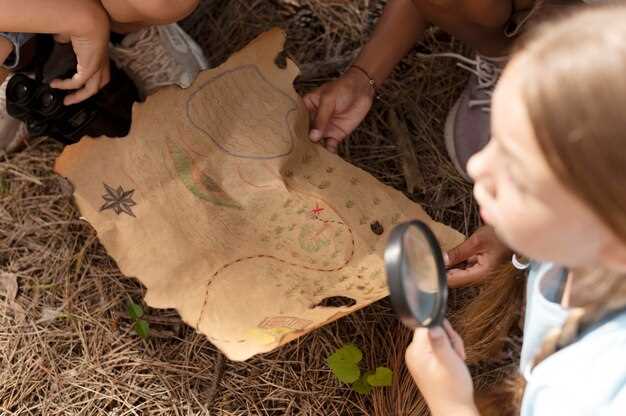
Focus on selecting a specific historical era that resonates with your interests and available resources. Medieval reenactment, particularly the period of the Crusades or the Hundred Years’ War, offers opportunities to delve into knightly combat, chivalric rituals, and the intricacies of feudal society. Pay attention to the clothing, armor, and weaponry to ensure authenticity and engagement for participants and audiences alike.
Another fascinating era is the Napoleonic Wars, characterized by its compelling military tactics and political upheaval. Recreate battles such as Waterloo or Austerlitz by understanding troop movements and employing accurate regiment formations. Each uniform detail, from epaulettes to shakos, serves a role in bringing the period to life.
Consider exploring the American Civil War, where reenactors can study not only military engagements but also the social and economic impacts of the conflict. Accurate reproduction of soldier gear, from rifles to haversacks, accompanies reenactments of key battles like Gettysburg or Antietam. Pay equal attention to the civilian side, highlighting the era’s significant cultural shifts.
The World War II era allows participants to immerse themselves in a technologically advanced period. Reenactments can range from the D-Day landings to the Battle of the Bulge, where attention to detail in military vehicles, artillery, and period-correct camps plays a critical role. Include homefront activities to provide a holistic understanding of the wartime society.
Each era in historical reenactment presents a unique set of challenges and rewards. Select the era that captivates you the most, and invest in comprehensive research to ensure an authentic and educational experience for all involved.
The Middle Ages: Knights, Castles, and Battles
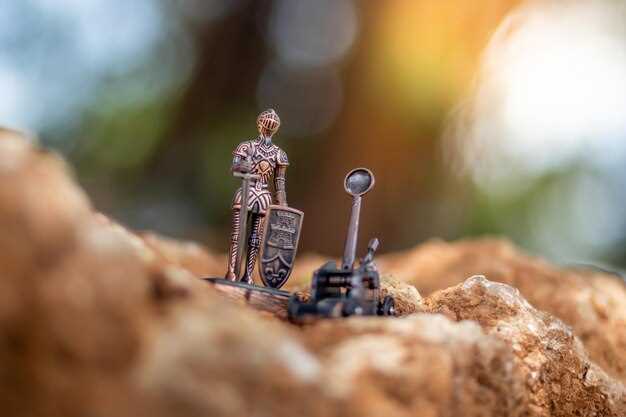
Attend a historical reenactment event focusing on the Middle Ages to truly absorb the atmosphere of the era. Engage with reenactors who portray knights to learn about their armor and combat techniques. Pay close attention to the intricate details of the chainmail, helms, and weapons used during demonstrations.
Explore the reenacted castle settings. Examine the architecture, defensive mechanisms, and daily life within these fortifications. Look for guided tours provided by experienced historians who can provide context about the castle’s strategic importance and design innovations.
Witness live battle reenactments. Observe the organization of troops and tactics employed, such as the use of cavalry and archers. Listen to narrators who explain the historical significance of each skirmish, highlighting differences in weaponry and strategy between various regions and periods.
If possible, participate in workshops or discussions offered at these events. These are often led by knowledgeable enthusiasts who can provide insights into the chivalric codes, heraldry, and the social dynamics of medieval society. Such interactions enrich understanding and appreciation of how the Middle Ages shaped modern society.
The American Civil War: Emphasizing Realism in Reenactment
Ensure authenticity by investing in period-appropriate clothing and equipment. Avoid modern materials and focus on historical accuracy. Research extensively to find patterns and fabrics that reflect the era. Consult primary sources like photographs and original uniforms for guidance.
Join reenactment groups dedicated to the American Civil War to gain experience and share resources. Participate in training events to improve skills like marching, drilling, and using period-correct weapons safely. Building camaraderie with fellow reenactors enhances the overall experience.
Study detailed historical accounts to understand the specific battles and events you are reenacting. Knowing the background provides depth to your portrayal and helps create an immersive experience for spectators. Develop a character by researching soldiers’ diaries and letters, incorporating their personal stories and experiences into your reenactment.
Pay attention to details beyond clothing and weaponry. Use historically accurate tents, cookware, and personal items to enhance the realism of your camp setup. Consider factors like camp layout and maintain discipline reflecting the period’s military life.
Engage with the public during reenactments by sharing historical facts and anecdotes. This interaction educates and fosters appreciation for the history being depicted. Encourage questions and discussions to make the experience interactive and informative.
World War II: Preserving Stories and Memories
Focus on listening to veterans and eyewitnesses, as firsthand accounts are invaluable for an authentic reenactment. Conduct interviews, attend veteran gatherings, and collaborate with history societies to collect personal stories. Emphasize the importance of understanding not just the events, but the emotions and daily challenges faced during the war.
To portray World War II accurately, delve into authentic uniforms and props. Joining reenactment groups dedicated to this era can provide you with guidance on sourcing articles that reflect the period accurately. Pay attention to detail such as insignia, weapon replicas, and period-correct equipment.
Incorporate these stories into your presentations through storytelling sessions or by creating character profiles based on real-life experiences. This approach not only honours the memories of those who lived through the war but also engages audiences, offering them a more personal understanding of history.
| Resource | Purpose |
|---|---|
| Local Archives | Access to letters, diaries, and photographs from the era for deeper research. |
| Veteran Organizations | Connecting with veterans for interviews and firsthand narratives. |
| Online Historic Databases | Gathering detailed military records and documents for factual accuracy. |
| Period Films and Documentaries | Visual aids to understand uniform details and wartime environments. |
Engage the local community by organizing events that highlight individual contributions during the war. Create interactive displays or host a storytelling evening where people can share their relatives’ war experiences. This builds a connection and fosters a richer understanding of the sacrifices made.
Finally, collaborate with schools to include World War II reenactments in their history programs. This not only educates the younger generation but also ensures the preservation of stories and lessons for years to come.
Ancient Rome: Gladiators, Culture, and Society
Begin your exploration of Ancient Rome by understanding the captivating role of gladiators. Gladiatorial games, originating from Etruscan funeral rites, became a major spectacle drawing vast audiences. Engaging in historical reenactment of these fierce fighters offers insight into their daily lives, combat techniques, and the societal values that underpinned such brutal entertainment. Enthusiasts can replicate specific fighting styles by studying replicas of gladiatorial armor and weaponry, as each type, such as the heavily armed murmillo or the agile retiarius, catered to different combat strategies.
Beyond the arena, delve into Roman culture with a focus on their architectural marvels and public life. Construct models of iconic structures like the Colosseum or forums, providing context to their significance in Roman society. These spaces were not just for spectating games but also hubs of political and social interactions. To extend this knowledge, recreate day-to-day scenarios from Roman life, such as a bustling marketplace or the grandeur of an imperial procession, illustrating the class hierarchies and the opulence enjoyed by Rome’s elite.
Society in Ancient Rome was complex and layered, demanding a nuanced approach in reenactments. Dive into Roman family life by portraying different roles such as the paterfamilias, the matron, and the slaves, each with distinct responsibilities and societal expectations. Additionally, examining Roman religion and its integration into daily practices enriches understanding. Participants can reenact religious ceremonies or festivals, such as Saturnalia, to appreciate the fusion of religious and cultural traditions.
Incorporating authentic Roman recipes and dining practices into reenactment scenarios can further enhance authenticity. Preparing dishes like garum or dormice provides a tangible connection to the era, offering participants and audiences a sensory experience of Roman life. These engagements, when paired with scholarly research and practical applications, undoubtedly enrich the experience of reenacting this fascinating period.
Practical Aspects of Participating in Historical Reenactment Near You
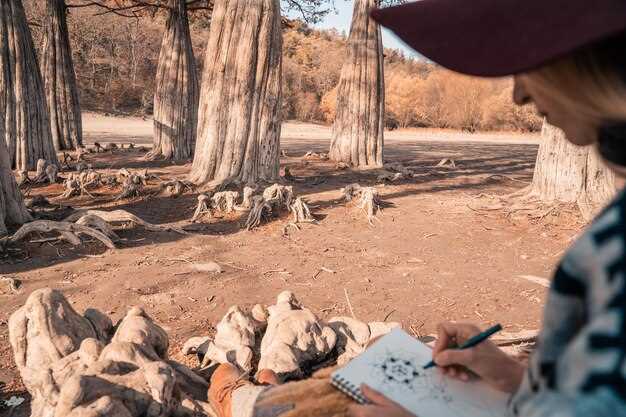
Begin by researching local reenactment groups or events to find opportunities nearby. Websites and social media pages often list upcoming events and group meetings. Connecting with these communities provides valuable insights and resources.
- Choose an Era: Select a historical period that fascinates you. This decision guides your research and helps you align with groups focusing on that era.
- Attend Events: Visit local events as an observer to understand the dynamics and meet members. This exposure helps identify the group that best matches your interests.
- Source Authentic Clothing: Look for vendors who specialize in period clothing or consider making your own using historical patterns. Accuracy in attire enhances the reenactment experience.
- Gather Equipment: Depending on the era, you might need weapons, tools, or household items. Many groups can guide you to craftsmen or stores offering reliable replicas.
- Understand Group Expectations and Rules: Different groups have various guidelines regarding authenticity and participation. Clarifying these early ensures a smooth integration into activities.
- Volunteer for Roles: Assisting in logistics or small roles during events helps you engage more deeply and learn the ropes quickly.
- Develop Skills: Reenactment often involves mastering period-specific skills such as blacksmithing, archery, or cooking. Workshops or online resources can be instrumental in skill development.
- Engage with Community: Participate in forums or local meetings to share insights and experiences. Building relationships within the community enhances your enjoyment and learning.
- Stay Updated: Keep track of changing guidelines or event schedules. Many groups have newsletters or online channels for the latest updates.
Participation in historical reenactment is rewarding, offering educational benefits and a communal spirit. By following these steps, you ensure an enriching and fruitful experience.
Finding Local Reenactment Groups and Events
Start by researching online platforms dedicated to historical reenactment. Websites like Meetup, Facebook Groups, and dedicated reenactment forums offer a wealth of information on local groups and events. Simply search for your area combined with terms like “historical reenactment” or “living history.”
- Visit Museums and Historical Sites: These venues often host reenactment events and can connect you with local enthusiasts. Check their event calendars or contact them directly.
- Join Online Communities: Participate in hobbyist forums and social media groups. They often have event listings and can provide personal recommendations.
- Attend Renaissance Fairs and History Festivals: These events frequently attract reenactment groups. Engage with participants to learn about other local opportunities.
- Connect with Libraries and Community Centers: Many local libraries and community centers host historical clubs and can be an important resource for finding reenactment groups.
- Check Regional Events Calendars: Websites and local magazines often feature upcoming events, including historical reenactments. Search for “regional historical events” to explore possibilities.
Networking with enthusiasts at these places increases your chances of finding a group that matches your interests. Keep an eye on bulletin boards at historical sites and don’t hesitate to ask staff members for recommendations. Harness these resources to dive deep into the engaging world of living history and become an active participant in your local community.
Costume Creation: Balancing Authenticity and Accessibility
Begin with choosing a specific era to focus your costume design. It’s crucial to conduct thorough research using historical texts, period paintings, and existing artifacts as references. Aim to select materials that closely replicate those used historically, such as linen for medieval European garments or silk for certain Asian periods.
When sourcing materials, consider how you can achieve authenticity without overextending your budget. Online forums and reenactment communities can suggest alternative fabrics that look the part but are made from modern, more affordable materials. Visiting fabric stores and discussing your requirements with store personnel can lead to discovering hidden gems at reasonable prices.
Focus on creating iconic items that define your chosen period, such as a distinct headpiece, footwear, or weaponry. Many foundational patterns for period clothing are available online, and their use allows you to maintain historical accuracy without needing advanced tailoring skills. Look for templates and sewing kits designed for beginners to simplify construction.
Balance historical authenticity with comfort and practicality. Reenactments often involves long hours, so select breathable fabrics and consider additional linings or padding where necessary. Think creatively about closures; while hooks, buttons, or ties might be period-accurate, zippers or velcro can be cleverly hidden for ease of use.
Customize your costume with details that reflect personal stories within the historical era, like embroidery or specific color schemes that signify social status. Embellishments can be achieved using readily available modern tools while still mirroring the artistry of the past. Consult tutorials online for crafting accessories such as jewelry or armor pieces using sustainable materials like leather or wood.
Engage with local reenactment clubs or participate in forums to exchange advice and share resources. Collaborating with others enhances learning and can result in borrowing or renting costly items rather than purchasing them. This is particularly helpful for unique or rare pieces that can be shared among members.
Finally, embrace the process of learning through trial and error. Costume creation is as much about the experience as the result. Adapt your designs based on feedback and the practicality of your initial attempts, enhancing the authenticity and accessibility of your historical portrayal in the process.
Understanding the Role of Reenactor: Skills and Responsibilities
Start by developing an in-depth knowledge of the historical period you choose to reenact. A thorough understanding of significant events, customs, clothing, and language of the era will enrich your portrayal and engage audiences effectively.
Pay attention to your costume and equipment. Authenticity in your appearance plays a critical role in historical reenactment. Use sources like historical records, museum exhibits, and expert consultations to ensure all items are period-appropriate and accurately represent the chosen era. This dedication to detail enhances the educational value of your performance.
Hone your acting skills to bring historical figures or common people of the past to life convincingly. This includes mastering period-specific body language, speech patterns, and etiquette. Attend workshops or acting classes if necessary to refine these abilities, allowing you to portray characters more authentically.
Engage in research continuously. The past is rich with information and ongoing studies may bring new insights. Stay updated with the latest historical findings and interpretations to ensure your reenactment remains relevant and factual.
Collaborate with other reenactors and organizations to share knowledge and support one another. Effective teamwork can create more dynamic and comprehensive reenactment experiences, benefiting both participants and viewers.
Take responsibility for teaching and inspiring your audience. Your portrayal should not only entertain but also educate attendees about historical contexts and their significance. Encourage questions and discussions to foster a deeper understanding of history.
Prioritize safety for both yourself and your audience. Handling period-accurate weapons or participating in combat reenactments necessitates adherence to strict safety protocols. Proper training and the use of protective gear ensure the well-being of everyone involved.
Balancing these skills and responsibilities will enrich your reenactment endeavors, making them more impactful and rewarding for both you and your audience.
Choosing the Right Historical Role for Your Interests
Identify your passion for a particular historical era or event by delving into the details of various periods. Consider your interest in social customs, warfare, politics, or daily life of specific centuries. Research extensively to find an era that resonates with you emotionally and intellectually.
Next, evaluate your skills and talents to match a role effectively. Do you enjoy craftsmanship, performing, or storytelling? For instance, roles requiring craftsmanship might involve creating period-accurate attire or tools. Those with a passion for acting might thrive in character portrayals during reenactments.
Connect with local reenactment groups to learn about available roles. Visiting events, talking to reenactors, and understanding group dynamics will help you gauge where you’ll fit best. Observe the range of roles–from soldiers and tradespeople to historical figures–and consider how your personality and interests align with these roles.
Finally, ensure commitment by considering the time and investment required. Historical reenactment often involves significant preparation, from creating costumes to understanding historical context. Be prepared to devote time to research and practice to authentically bring your chosen character to life.
Choosing a suitable historical role enhances the reenactment experience and brings personal fulfillment in exploring the past with depth and authenticity.
Q&A:
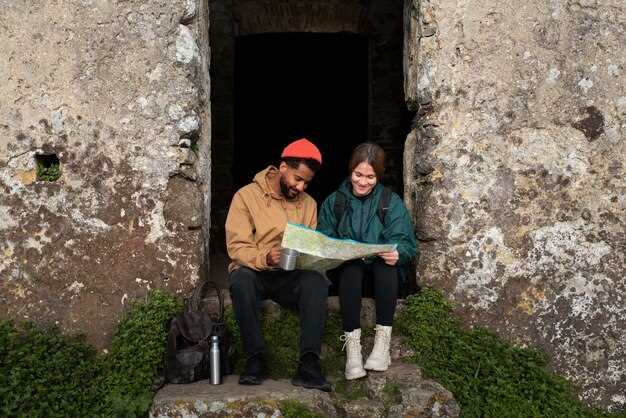
What is historical reenactment and why do people participate in it?
Historical reenactment is an educational form of entertainment where participants recreate scenes from historical events, often dressing in period-appropriate costumes and using authentic props. People participate in it to gain a deeper understanding of history, to educate others, and to bring history to life in an engaging and interactive way. It provides participants with a communal experience that connects them to the past and to others with similar interests.
What are some of the key eras explored in historical reenactments?
The key eras often explored in historical reenactments include the Middle Ages, the American Civil War, the Napoleonic Wars, World War I, and World War II. Each of these periods offers unique elements of military, cultural, and social history that make them popular choices for reenactors.
How authentic are the costumes and equipment used in reenactments?
The level of authenticity in costumes and equipment varies among reenactment groups. Some strive for meticulous accuracy, using handmade clothing and equipment based on historical research, while others might opt for a more general representation for accessibility. Many reenactors place high importance on authenticity, often investing time and resources to ensure their representations are as close to history as possible.
What themes besides battles are portrayed in historical reenactments?
Aside from battles, historical reenactments often explore everyday life, including the social and cultural practices of the time. Themes like traditional crafts, trades, and domestic activities are portrayed to provide a fuller picture of the past. These portrayals help depict how people lived, worked, and interacted during the era being reenacted, allowing audiences to appreciate the broader historical context.
Can anyone participate in historical reenactments, and how does one get involved?
Yes, anyone with an interest in history can participate in historical reenactments. To get involved, aspiring reenactors can start by attending local events, joining reenactment groups or societies, and researching the era they are interested in. Many groups welcome newcomers and provide guidance on how to acquire or create period-appropriate costumes and equipment.
What are the most popular eras for historical reenactment, and why do people choose to reenact these specific times?
The most popular eras for historical reenactment often include the American Civil War, World War II, the Medieval period, and the Victorian era. These periods are frequently chosen due to their significant impact on society and their well-documented historical events, which provide a wealth of information for reenactors to create accurate portrayals. Additionally, certain eras are popular because they represent times of dramatic change or conflict, offering participants a chance to explore different aspects of human experience, such as warfare, daily life, political struggles, and technological advancements. Engaging with these periods allows reenactors to educate the public, honor the past, and participate in a form of storytelling that brings history to life.
